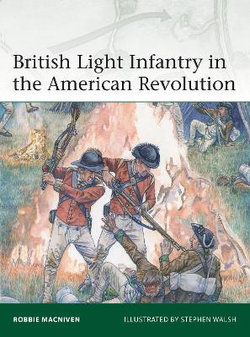The Seven Years' War (1755–63) saw the first large-scale use of light infantry units by major European powers. Britain's light infantry experiments grew concurrently out of the European and North American experiences.
Dedicated light companies were added to regular infantry battalions and a number of independent light infantry outfits were formed, alongside composite battalions formed of light infantry companies. Despite their battlefield successes, in 1763 the light companies throughout the Army were disbanded. Even so, the prominent role played by light infantry was not forgotten, and in 1771–72 light infantry companies were reinstated in every regiment in the British Isles. In 1774 William Howe formed a training camp at Salisbury specifically to practise light infantry doctrine, though he never laid out the specifics in a military manual.
The outbreak of the American Revolutionary War in 1775 found the British Army wanting, and the light companies were no different. After evacuating Boston in March 1776, Howe began to remodel and drill his army at Halifax, standardizing a lighter uniform and emphasizing more open-order tactics. He also brigaded his light companies together into composite battalions, as he had done during the Seven Years' War.
These battalions went on to fight in almost every major engagement during the Revolutionary War. It could be argued that they served more as elite shock troops than as skirmishers, though their conduct in battle demonstrated their ability to act as either. They spearheaded British assaults, using night-time surprise and relying upon the bayonet in engagements such as Paoli and Old Tappan. They also matched their regular and irregular opponents in bush-fighting, and at times fought in far-flung detachments alongside Native American and Loyalist allies on the frontier.
Over the course of the war they developed a fearsome reputation, and exemplified the psychological characteristics exhibited by crack military units across history. Their success was so marked that the Continental Army sought to emulate them with the formation of their own light companies, which by 1781 comprised an entire division.
The lessons taken by the British Army from the Revolutionary War were mixed. As had happened in 1763, the dedicated light battalions did not survive the end of the conflict in 1783, and the British Army found itself initially ill-equipped to match the massed light troops deployed by Revolutionary France from 1793 onwards. The lessons were relearned in time for success in the Peninsular War (1807–14), however, with the formation of dedicated light and rifle regiments and the doctrinal developments of that Revolutionary War veteran, Sir John Moore.




Share This Book: